Ertach Kernow - Reviewing Ertach Kernow 2023
This Cornish heritage weekly article has covered the length and breadth of Cornwall this year. Still after three and a half years Ertach Kernow has hardly scratched the surface of our wonderful Cornish environment, history and culture. Whilst this year fear of the recent pandemic had almost been forgotten we were beset by larger amounts of rainfall than usual. Looking on the bright side that broke us free from dread of a prolonged hosepipe ban as our largest reservoir at Colliford had at one point reached a low of just thirteen percent full. A visit to the dam that forms Colliford lake showed the low level before the summer tourist season really began.
Later in the year we visited the historic parish of Gwennap and toured the villages of St Day and Carharrack as well as Gwennap preaching pit. Here the Wesley brothers evangelised many Cornish folk back in the 18th century at the birth of Methodism. That this was amongst the richest areas of land throughout Europe during the Cornish mining boom can hardly be believed today. Those days seem so long ago as we viewed the ruined roofless shell of Gwennap Church now thankfully protected and valued locally as a venue for events. A view overlooking Poldice Mine may appear like decimated ruins, but this area was described as far back as 1750 by the Cornish historian William Hals as ‘that unparalleled and inexhaustible tin-work called Poldys which for above 40 years apace hath employed yearly from 800 to a 1000 men and boys labouring for and searching after tin in that place, where they have produced and raised up for that time yearly at least £20,000 worth of that commodity to the great enrichings of the Lords of the Soil, the bound owners, and the adventurers in those Lands’.
As always click the images for larger view
Visits to Cornish coastal communities began in January with a trip to Porth Navas, now Port Navas, and a look at the history of this small village. Its golden age was the 19th century with the expansion of its granite quarries, but also its long association with oyster harvesting. Now it’s home to what they claim is the smallest yacht club in the world founded in 1958 set amongst lovely river views and historic cottages.
The village of Polruan was visited in March along with the medieval church at Lanteglos by Fowey. Boatbuilding continues Polruan’s shipbuilding heritage established many centuries ago. This in itself is a huge subject and the wider area has a terrifically interesting past with land owned by influential families with ancient manors
Porthleven was the next coastal community visited in May and this was an opportunity to explore as well as give a talk to the Porthleven Old Cornwall Society. What a lovely village and harbour with some interesting buildings to look at. We caught the tail end of a food festival, Porthleven has much to commend itself.
Although the parish of St Veep isn’t a coastal parish it does have settlements with maritime history due to the River Lerryn running into the larger River Fowey. Again, this small sparsely populated parish has much historic and more recent ruins to explore. Sitting to the side of the river with a packed lunch on a warm sunny day is highly recommended.
In August an Ertach Kernow article looked at the Fowey Estuary itself. This is an important river with a rich maritime history and one of the principle transport links into Cornwall’s interior. So much so that from the 14th century through to the Tudor period defences were erected by the English crown to thwart any invasion. The remains of the blockhouses that had the chain strung between them remain each side of the estuary with that at Polruan better preserved. On the Fowey side of the estuary stands St Catherines Castle. This replaced the blockhouse defences during the 16th century and is an earlier Henrician version of the later St Mawes and Pendennis castles which protected the mouth to Carrick Roads.
More recently this year we reviewed the Camel estuary and Padstow as a historic maritime haven for shipping. The infamous Doombar at the mouth of the estuary, cause of so many shipwrecks on its shifting sands, is an important part of that history. Another coastline beset by shipwrecks was that between Coverack and Porthoustock with the ill-famed Manacle Rocks scene of some horrendous losses of life over the centuries. The hinterland of these two small Lizard Peninsula communities as part of a World Heritage site has lots of interesting places to visit.
Inland villages also featured with a visit to the moorland parish of Warleggan described by Nicklous Pevsner as ‘the loneliest village on Bodmin Moor’. Who would have thought that such small places could offer so much of interest with an appealing church and eccentric former rector Rev. Frederick W. Densham. He was later made famous in films played by Sir John Gielgud and more recently by Edward Woodward. In May Ertach Kernow featured the village of St Germans, which besides being at the heart of an ancient ecclesiastical community with its Norman church is also had a lot of fun. From historic times markets and fairs were part of life and more recently the Port Elliot Estate has been home to an evolving number of festivals, perhaps best remembered for the Elephant Fayre that ran at Port Eliot between 1981 and 1986 followed by the ‘Port Eliot Lit Fest’ and now a three-day festival ‘Tunes in the Park’. Cardinham, best known for its woodlands had other aspects of its history, buildings and monuments shared in September. Medieval families, the church and even older hillfort are part of the parish of Cardinham. St Mawgan in Pydar with its two main settlements so very different were discussed in August. The historic church, priory and churchtown was compared alongside the modern 20th century coastal settlement at Mawgan Porth, albeit the later does have the remains of a 10th century courtyard type settlement. The Reverend R S Hawker will always appear somewhere each year. This time was in October when Ertach Kernow looked at the beautiful but sparsely populated parish of Morwenstow, Cornwall’s most northerly parish. Beauty contrasted with its perilous coastline and where Hawker became renowned for burying drowned sailors washed up onshore with full Christian rites. We mustn’t forget the Rame Peninsula also known as Cornwall’s forgotten corner and a visit there in October was very enjoyable and informative. Taking in a number of settlements including Kingsand, Cawsand, St John and Torpoint there really was so much more to see and share with another visit hopefully in 2024.
People, some more well-known than others, featured. Sir Christopher Hawkins a wealthy landowner was also known as a boroughmonger, one who purchased opportunities to control an electoral constituency prior to the 1832 Great Reform Act. Besides his political shenanigans and accumulation of wealth he was a great supporter of Richard Trevithick. Interestingly the Trewithen Estate, formerly owned by Sir Christopher is now negotiating a loan agreement to house the original Trevithick high-pressure steam threshing engine used at Trewithen. Pentewan was just one place that benefited from Sir Christopher’s investment. An interesting character appreciated, but also misunderstood and sadly largely forgotten. Robert Hunt has memorialised himself through his work in collecting Cornish legends, myths and stories. He was very much more than that but whilst the passage of time has erased knowledge of many of his achievements books of legends and Cornish stories continue to be published with him featuring as the author. Hopefully the October article helped share some of his other works.
The dark history of the Trevelyan family was explored in September. Besides a period of slave ownership perhaps the most reviled member of this family with its ancient Cornish roots was Edward Charles Trevelyan. Loathed by the Irish for his lack of support during the Irish famine he is remembered especially in the Irish protest song ‘The fields of Athenry’. Marking the coronation of King Charles III in May was a look at the article entitled Kings and Cornwall's History. This covered aspects of Cornwall’s borders and place in history with reference to kings from Ecgberht in the 9th century and the settlement of Cornwall’s borders by Æthelstan. Not necessarily about a person, July’s article ‘Cornwall’s Arthurian legacy’ considered the beginnings and continuation of the legend and the effect that this had on Cornwall and the local community at Tintagel which benefitted greatly.
Ertach Kernow looked at medieval road bridges, heritage places at risk, monuments and strange stones. The Treen logan stone with its story of destruction and relocation to its former state was an interesting topic to investigate. New villages and hamlets set up through a mining boom at Caradon, Cornish institutions and museums set up from the 19th century and many more subjects were examined. I hope that this past years Ertach Kernow articles have proved varied and interesting. A full list of articles can be explored on the website at www.cornwallheritage.com with the relevant blog just a click away.
The weeks seem to pass so quickly these days and reviewing this year’s articles many I thought were published this year were actually back in 2022. I look forward to exploring much more of Cornwall’s history, culture and environment and visiting many more places throughout our wonderful nation. Kernow Bys Vyken ha Bledhen Nowydh da.
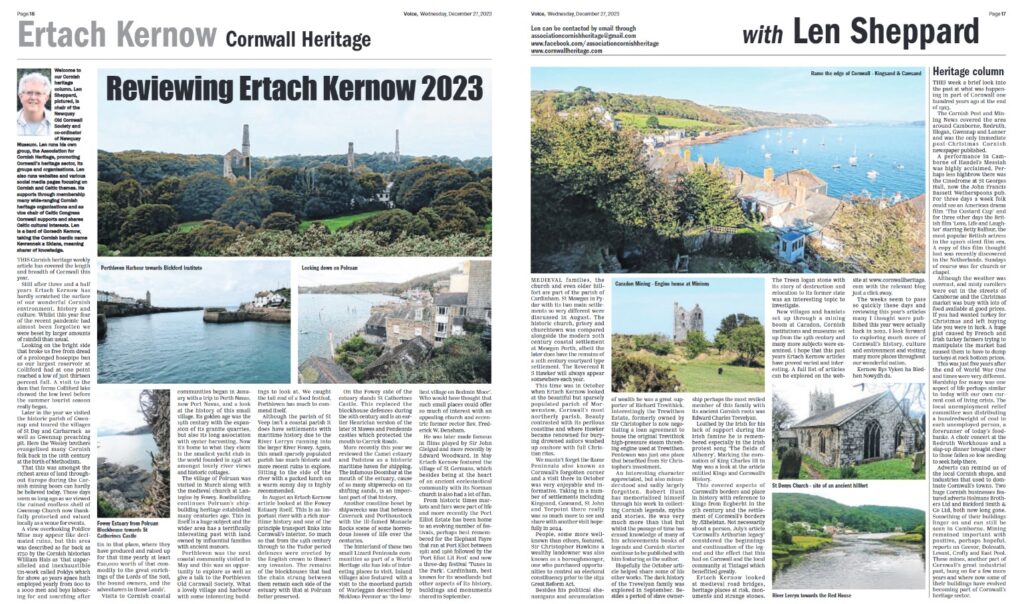
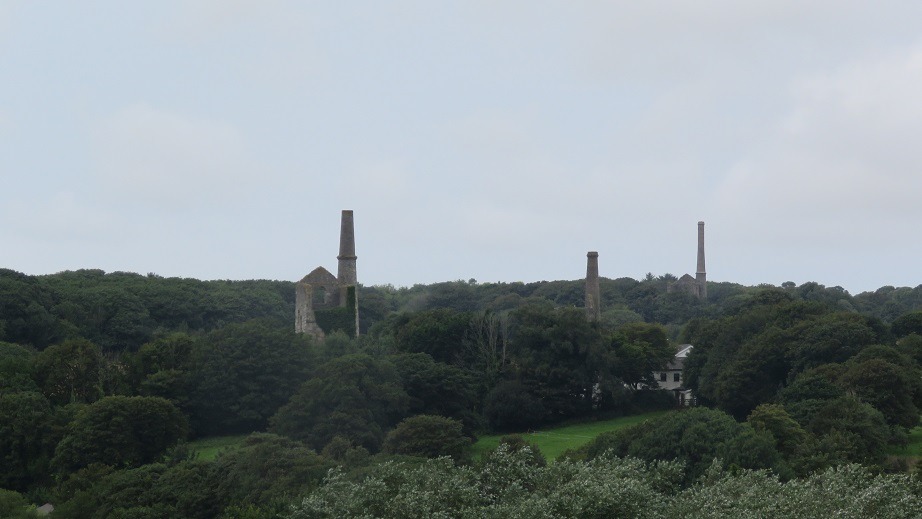
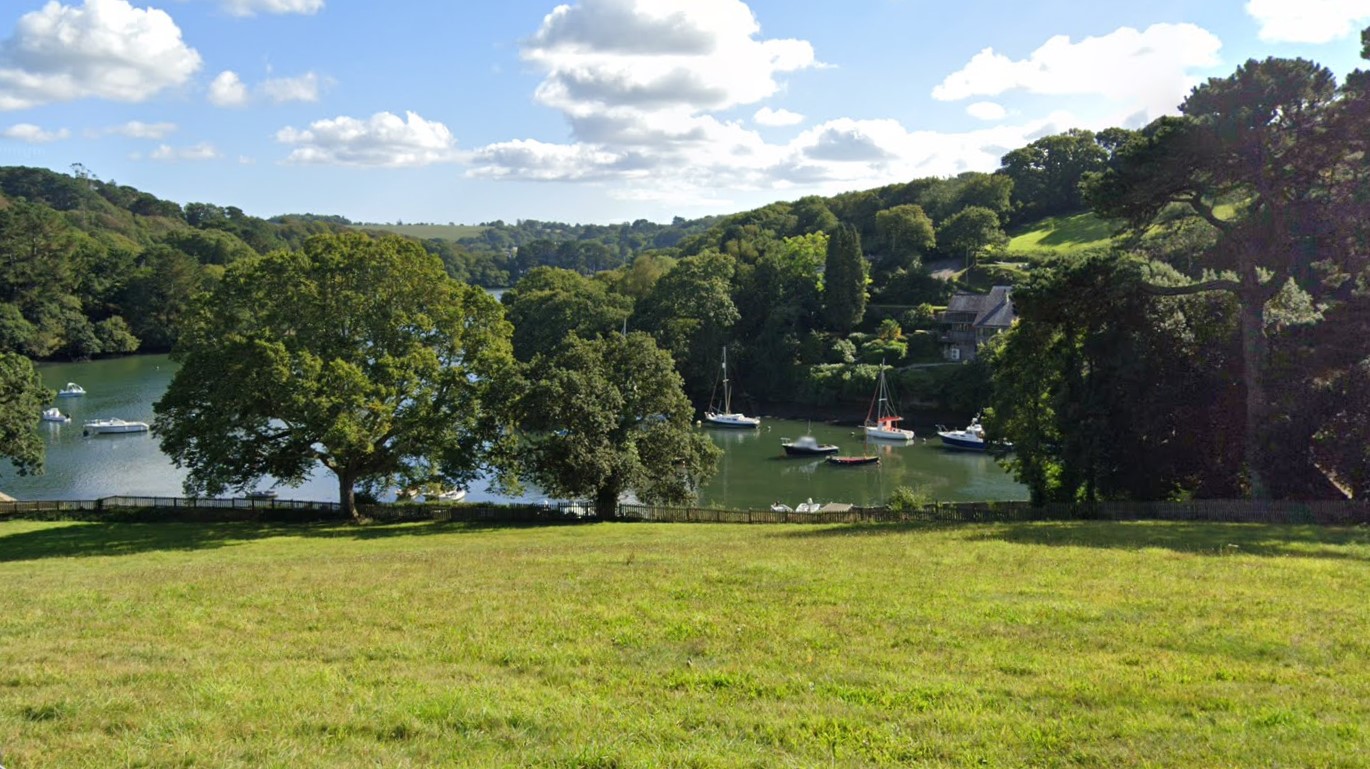
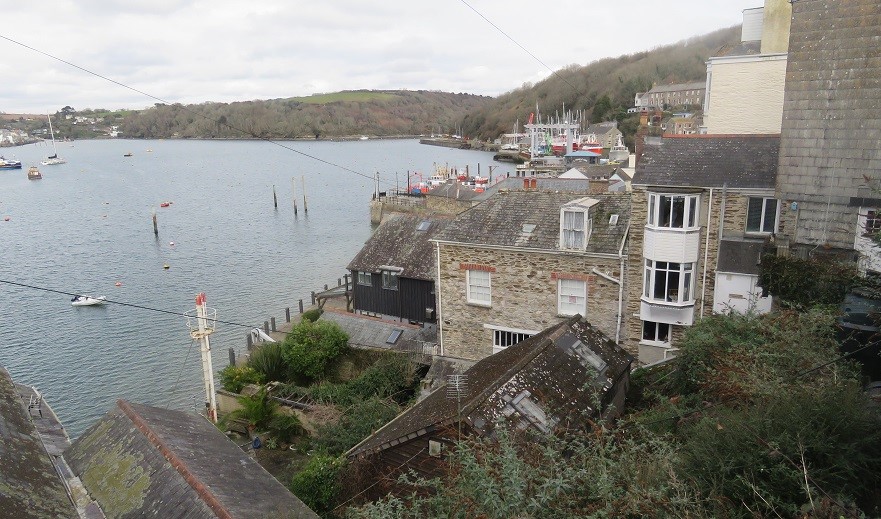
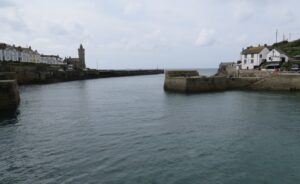
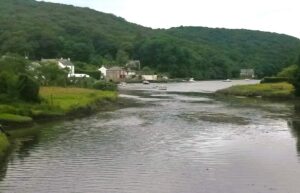
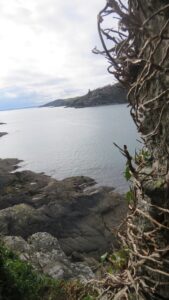
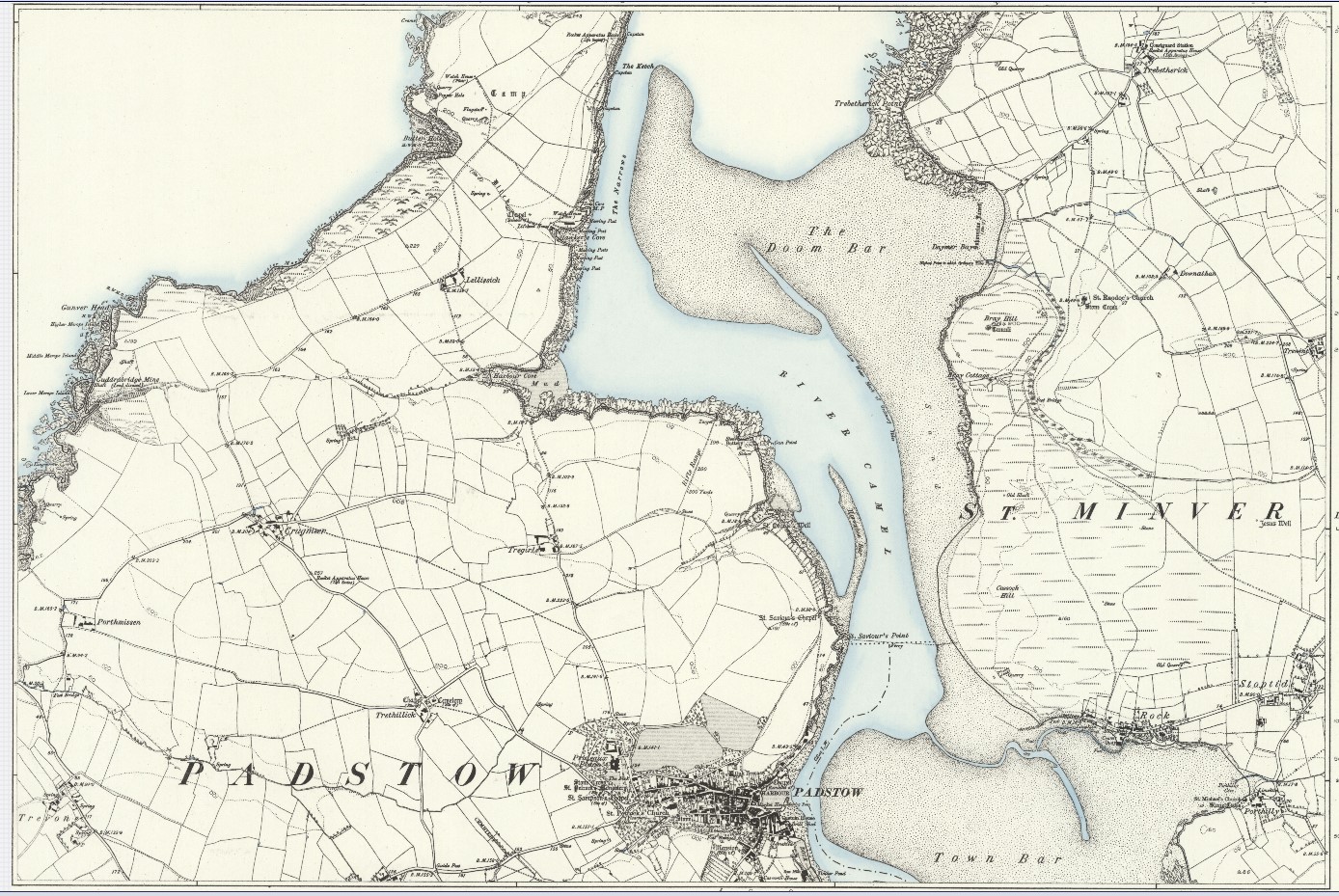
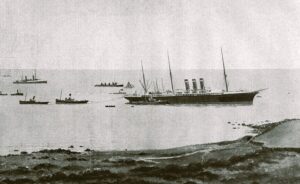
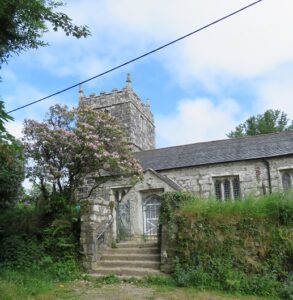
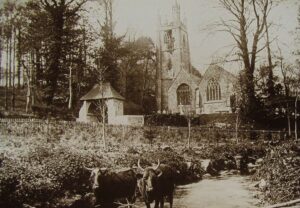
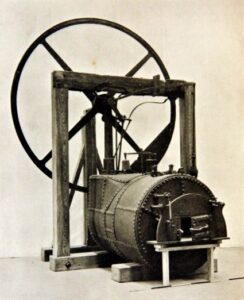
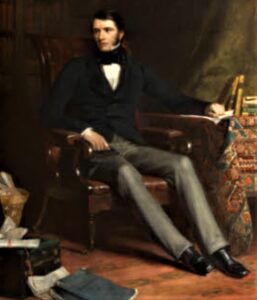
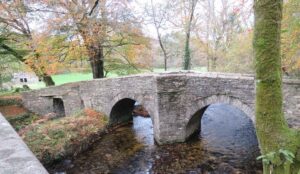
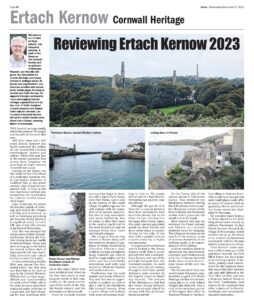
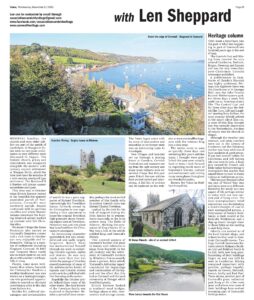
![[183] Ertach Kernow Heritage Column - 27th December 2023 - What was in the news Ertach Kernow Heritage Column - 27th December 2023 - What was in the news](https://www.cornwallheritage.com/wp-content/uploads/2023/12/183-Ertach-Kernow-Heritage-Column-27th-December-2023-What-was-in-the-news-289x300.jpg)